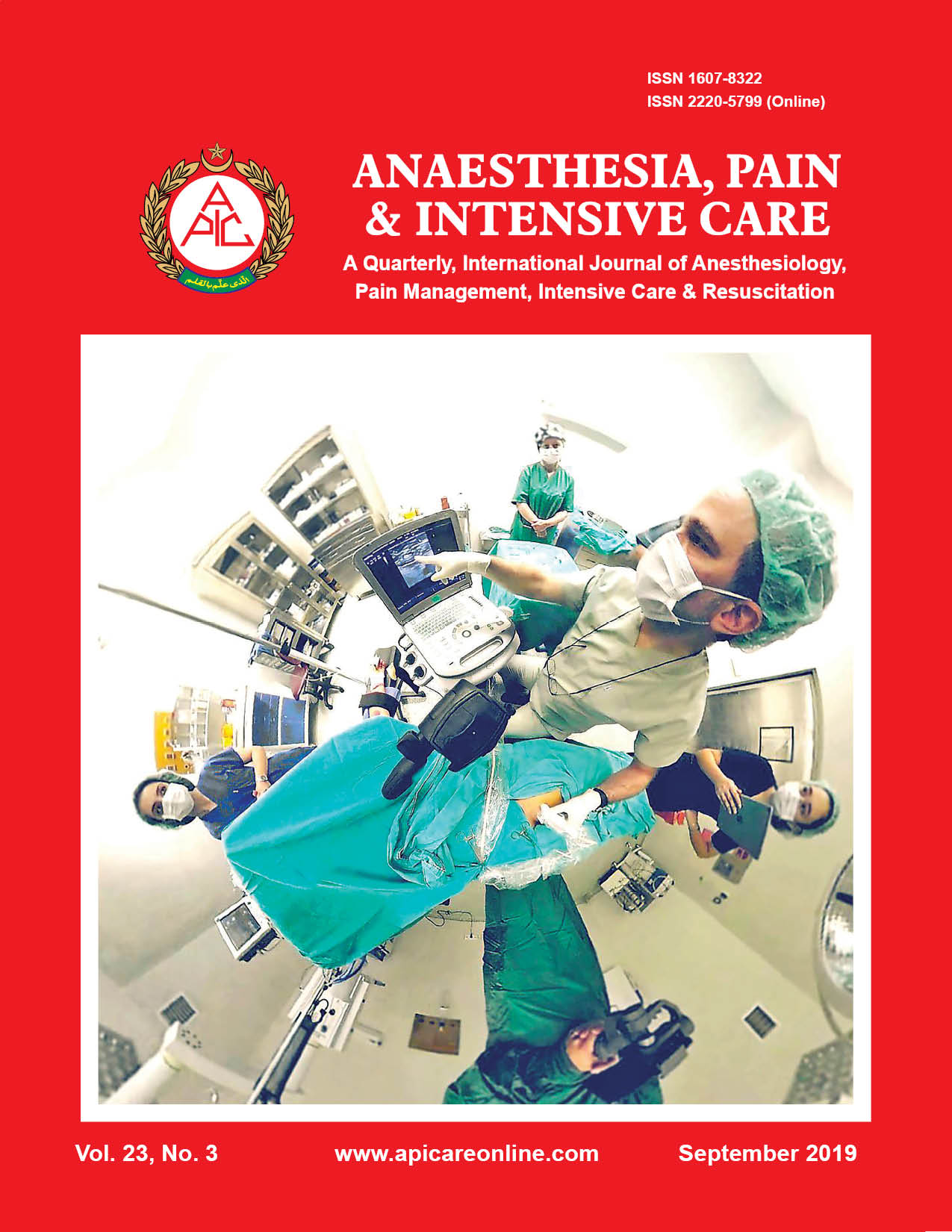Comparison of levobupivacaine and bupivacaine in fascia iliaca compartment block (FICB) for postoperative pain management in surgeries for fractures of neck of femur
Abstract
Background and aims: Hip fractures are painful and usually affects elderly patients. If left untreated or under-treated, post-operative pain may increase the length of hospital stay and delayed ambulation. The use of peripheral nerve blocks in this population can significantly reduce the associated mortality and morbidity, without the side effects of systemic analgesics. We conducted this study to compare the use of levobupivacaine with bupivacaine in fascia iliaca compartment block (FICB) for postoperative pain management in surgeries for fractures of neck of femur
Methodology: This prospective, randomised, double blind study was carried out after approval from the ethical committee and obtaining written informed consent. We enrolled 45 patients undergoing surgery under spinal anesthesia for extracapsular fractures of proximal femur and divided into 3 groups (15 each). Group L: received FICB with 30 ml of levobupivacaine 0.25% (75 mg). Group B: received FICB with 30 ml of bupivacaine 0.25% (75 mg). Group T: no block given. After 30 min patients were shifted to operating room and administered spinal anesthesia in sitting position. Primary outcome was total analgesic consumption in 24 h. Secondary outcomes- patient comfort during positioning for spinal, sensory onset time, postoperative VAS, and time to first analgesic request were registered
Results: Cumulative analgesic consumption was significantly lower in Groups L (93.33 ± 59.362 mg) and B (126.67 ± 45.774 mg) as compared to Group T (273.33 ± 79.881 mg); no significant difference was found between Groups L and B. The time to first analgesicrequest in Group L was 877.33 ± 355.673 min, Group B was 845.33 ± 379.997 min and Group T was 202.67 ± 142.351 min. Patient comfort on positioning was lowest in Group T.
Conclusion: Administration of FICB in patients undergoing surgery for fractures of proximal femur led to a significant reduction in postoperative pain as compared to systemic analgesics alone. The use of equal concentration of levobupivacaine as compared to bupivacaine provided no added advantage.Background and aims: Hip fractures are painful and usually affects elderly patients. If left untreated or under-treated, post-operative pain may increase the length of hospital stay and delayed ambulation. The use of peripheral nerve blocks in this population can significantly reduce the associated mortality and morbidity, without the side effects of systemic analgesics. We conducted this study to compare the use of levobupivacaine with bupivacaine in fascia iliaca compartment block (FICB) for postoperative pain management in surgeries for fractures of neck of femur
Methodology: This prospective, randomised, double blind study was carried out after approval from the ethical committee and obtaining written informed consent. We enrolled 45 patients undergoing surgery under spinal anesthesia for extracapsular fractures of proximal femur and divided into 3 groups (15 each). Group L: received FICB with 30 ml of levobupivacaine 0.25% (75 mg). Group B: received FICB with 30 ml of bupivacaine 0.25% (75 mg). Group T: no block given. After 30 min patients were shifted to operating room and administered spinal anesthesia in sitting position. Primary outcome was total analgesic consumption in 24 h. Secondary outcomes- patient comfort during positioning for spinal, sensory onset time, postoperative VAS, and time to first analgesic request were registered
Results: Cumulative analgesic consumption was significantly lower in Groups L (93.33 ± 59.362 mg) and B (126.67 ± 45.774 mg) as compared to Group T (273.33 ± 79.881 mg); no significant difference was found between Groups L and B. The time to first analgesic request in Group L was 877.33 ± 355.673 min, Group B was 845.33 ± 379.997 min and Group T was 202.67 ± 142.351 min. Patient comfort on positioning was lowest in Group T.
Conclusion: Administration of FICB in patients undergoing surgery for fractures of proximal femur led to a significant reduction in postoperative pain as compared to systemic analgesics alone. The use of equal concentration of levobupivacaine as compared to bupivacaine provided no added advantage.
Citation: Raiger LK, Gehlot RK, Bedi V, Betkeker SA. Comparison of levobupivacaine and bupivacaine in fascia iliaca compartment block (FICB) for postoperative pain management in surgeries for fractures of neck of femur. Anaesth pain & intensive care 2019;23(3):284-289














